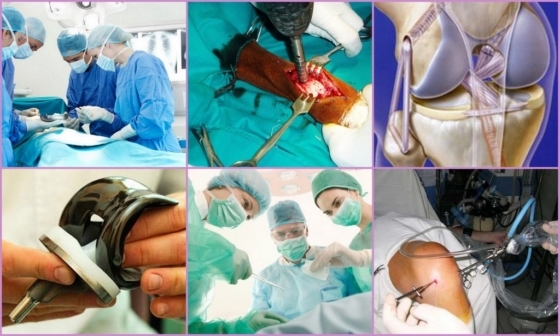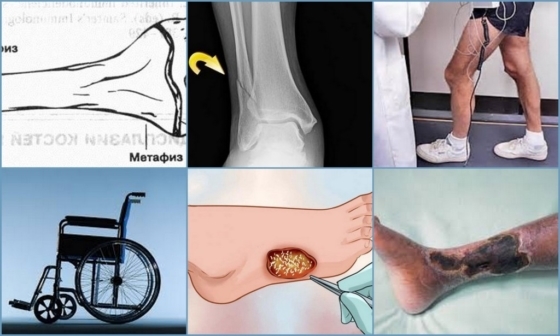Neurodegenerative diseases of the brain, symptoms and treatment
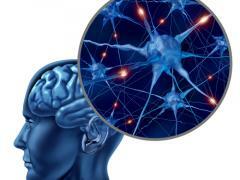
Neurodegenerative diseases of the brain are known to date quite a lot.The pathogenesis of most of them has been studied quite well, but in a number of cases the triggering factor of the development of the disease has not been established.
Virtually all neurodegenerative diseases of the brain are accompanied by pronounced disorders of a number of functions of this organ, which ultimately ends sooner or later with disability.
In the later stages of development of this group of diseases of the nervous system, patients tend to lose not only their professional skills and cognitive functions, but in some cases they lose their ability to self-service, and they need constant care, the whole weight of which often falls on someoneFrom family members of the patient.
These are incurable diseases, the symptomatic therapy in which is capable in some way to reduce the manifestations of brain damage, but it is impossible to eliminate them today, at best it is possible to improve the quality of life and slow the loss of functions.
content:
- Features classifying neurodegenerative diseases
- Clinical manifestations tauopathy
- Properties sinukleopaty
- trinucleotide disease
- Prion diseases
- Lesions motoneuron and neyroaksonalnye dystrophy
- prevention and prognosis of neurodegenerative brain diseases
Data ClassificationSlowly progressing diseases
Based on the features of the appearance and mechanism of the timesThese diseases are divided into several groups:
The pathology of tauprotein.
- Synucleopathy.Trial nucleotide hereditary diseases.
- .
- Prion diseases.
- Diseases of motoneuron.A group of neuroaxonal dystrophies.
Taupatii arise due to disruption of the phosphorylation of the Taubelka, which is able to be fixed in the brain cells, thereby leading to disruption of their function.The most common disease is Alzheimer's disease.
By the peculiarities of pathogenesis, synucleopathies have a certain similarity with taupatiyami, however, in this case problems arise with another protein - alpha-sinuclein.This insoluble protein, which is deposited in the brain cells, leads to violations of its functions.
Trinucleotide diseases are hereditary diseases that are characterized by an increase in the number of trinucleotide repeats.
Prion diseases are a separate group of infectious agents that do not contain nucleic acids.Prions are nothing more than proteins with an abnormal structure that are capable of converting normal proteins of the human body into such compounds.

Defeats motoneurons.With this pathology, the nerve cells that support movement are involved in the pathological process.Degenerative changes in this case can be subjected to both central motor neurons and peripheral ones.
The most known disease of this group is amyotrophic lateral sclerosis.
The group of neuroaxonal dystrophies is represented by relatively rare hereditary diseases.
Clinic, diagnosis and treatment of taopathies
Among the diseases of this group, there are such pathologies:
- Alzheimer's disease.
- Corticobasal degeneration.
- Disease of the Peak.
Of the taupatii, Alzheimer's disease is most prevalent, beginning with subtle manifestations such as memory impairment and the speed of learning new skills and skills, resulting in gross violations of cognitive functions and loss of self-service ability.
The diagnosis is established based on the characteristic symptomatology, and also based on such methods of neuroimaging as magnetic resonance imaging.There are few agents used to treat this pathology - several drugs of the cholinesterase inhibitor group and one agent of the NMDA antagonist group.
Despite the ongoing treatment, the average life expectancy of such patients is about seven years.
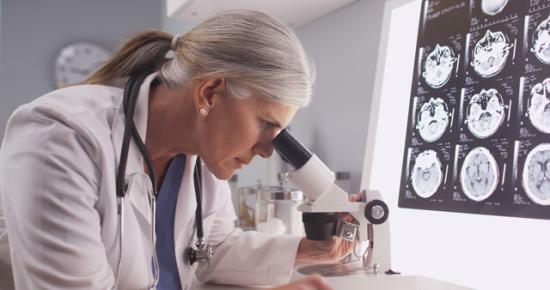
Peak disease is characterized by atrophy of the cerebral cortex, especially the temporal and frontal lobes.The symptomatology is similar to that of Alzheimer's, but the disease is more malignant and less treatable.
Therapy is exceptionally symptomatic, in the presence of indications neuroleptics are used.
In corticobasal degeneration, atrophy of the cerebral cortex is also observed, but with a slightly different localization.This pathological process primarily affects the basal ganglia and black matter.Characteristic hypokinetic-rigid syndrome, disorders of sensory functions, myoclonus, as well as a number of other manifestations, which are usually diagnosed( puncture is usually not performed).
Clinical manifestations, diagnosis and treatment of syncopeopathy
This group of neurodegenerative diseases includes:
- Parkinson's disease.
- Dementia with the presence of Levy bodies.
- Multisystem atrophy.
Parkinson's disease among this group of diseases is the most common.With this pathology, the nerve cells that produce the neurotransmitter dopamine die, which leads to muscle rigidity, tremor, hypokinesia, and postural instability.
The diagnosis is usually made on the basis of characteristic clinical manifestations, in typical cases it does not cause difficulties.From drugs used Levodopa, dopamine receptor agonists, as well as monoamine oxidase inhibitors.However, today there is no treatment that can cure the disease, but not reduce its manifestations.
Dementia with Levi bodies is considered to be the second most common disease from this group of neurodegenerative diseases of the brain.Characteristic are the same manifestations as in Parkinson's disease, but hallucinations and apparent fluctuations in cognitive functions are added to them throughout the day.With this disease, a number of drugs are contraindicated, treatment is often reduced to taking Levodopa and acetylcholinesterase inhibitors.
For multisystemic atrophy, in addition to the phenomena of parkinsonism, poor coordination of movements, as well as vegetative dysfunction, are characteristic.
Trinucleotide Diseases
This is a group of hereditary diseases, the most common of which are:
- Huntington's Chorea.
- Friedrich's Ataxia.Spine-carbellar ataxia.
In the case of these diseases, the onset of the disease is gradual.With Huntington's chorea, specific hyperkinesis attracts attention, as well as various mental disorders.The diagnosis is confirmed by magnetic resonance imaging, as well as genetic research, which is informative for all diseases of this group.This disease is incurable, it is possible to only reduce the manifestations of Huntington's chorea.
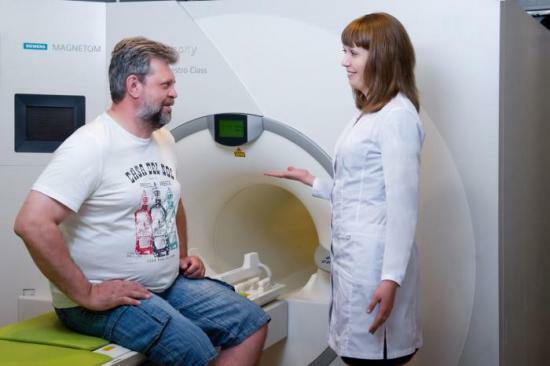
Friedrich's ataxia is considered the most common of the hereditary ataxias.Characterized by violations of walking, handwriting, weakness in the lower limbs.Gradually, these manifestations are joined by muscle atrophy, beginning with the lower limbs and gradually spreading.
With spinocerebellar ataxia, there is a gradual disruption in the coordination of movements, which is primarily seen in violations of walking.Often develops and atrophy of the cerebellum.For treatment, use nootropics, muscle relaxants and anticonvulsants, but this disease is incurable.
Prion diseases
Symptoms of neurodegenerative diseases of the brain can be quite diverse in the case of prion diseases.This group of diseases is caused by a unique pathogen - it is not a viral, bacterial agent or genetic pathology, it is a pathological protein( which means these are the only pathogens that do not contain nucleic acids).
Among these diseases it is possible to single out:
- Kuru.Fatal family insomnia.
- .
- Creutzfeldt disease - Jacob.
Creutzfeldt-Jakob disease is characterized by disorders from the extrapyramidal system, dementia, which is characterized by very rapid progression, epileptic seizures, visual and speech disorders.
In fatal familial insomnia, the pathological protein is deposited in the brain regions responsible for the regulation of sleep.This leads to gradually progressing sleep disorders, and in the late stages of the patient and at all loses the ability to sleep.At this time hallucinations, weight loss of the body join.
At the final stage, a person stops talking and somehow reacting to what is happening around.
The Kuru infects predominantly the Aboriginal people of New Guinea, the pathological protein is distributed through the tribal cannibalism existing in the tribes.The disease begins with nonspecific complaints, but as the development develops tremor in the whole body, coordination of movements is disrupted.After the appearance of obvious symptoms, patients live up to one year.
There is no specific etiotropic treatment for this group of diseases.Symptomatic treatment can only reduce the severity of manifestations.
Neuroacsal dystrophies, as well as motor neuron pathology
Of the motor neuron diseases, the most prominent is amyotrophic lateral sclerosis.Motor neurons with this disease are affected both in the cerebral cortex and in the dorsal.This leads to paralysis, which eventually also cause muscle atrophy.
The disease develops gradually, with patients having to resort first to ancillary equipment to provide breathing in their sleep, and later to the ventilator.The only drug that has at least some effect is Riluzole, but it can only slow the progression of the disease.There is no etiotropic treatment.

Neurodegeneration with deposition of iron in the brain is the representative of the group of neuroaxonal dystrophies.In this rare disease, symptoms are caused by the deposition of iron in the brain tissues.
The disease is manifested by walking disorders, which are followed by other disorders of movement, as well as mental disorders.As in the case of other diseases, treatment is symptomatic.
Prediction features, as well as possible prevention
The prediction for neurodegenerative diseases is largely influenced by a fairly large number of factors.However, the main features of the course of the disease in a particular patient, as well as the way the pathological process responds to ongoing treatment.
There is no specific prevention of diseases of this group, however, researchers have nevertheless discovered certain patterns that, in some of the diseases, reduce the risk of their development, or provide a later onset of the disease and a more favorable course with slow progression.
For example, in the case of Alzheimer's disease, a kind of prevention is active intellectual activity.Also worth noting the role of rational nutrition and motor loads, which prevents atherosclerosis, and thereby reduces the risk of developing neurodegenerative diseases.
A promising area of treatment and prevention of such diseases is gene therapy.
Neurodegenerative diseases of the brain are a group of slowly progressing diseases that eventually lead to disability.Earlier detection of the problem allows to maintain a satisfactory quality of life for the longest possible period.
This once again emphasizes the importance of monitoring your health and promptly contacting your doctor with complaints about the changes that occur, because they can be symptoms of serious illnesses.
Read more about nt, what is neurodegenerative diseases - on the video:


